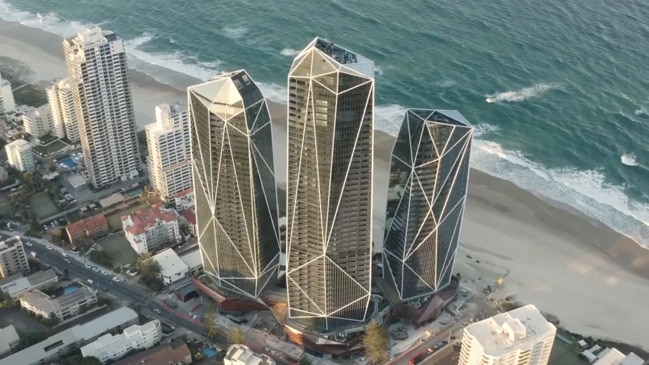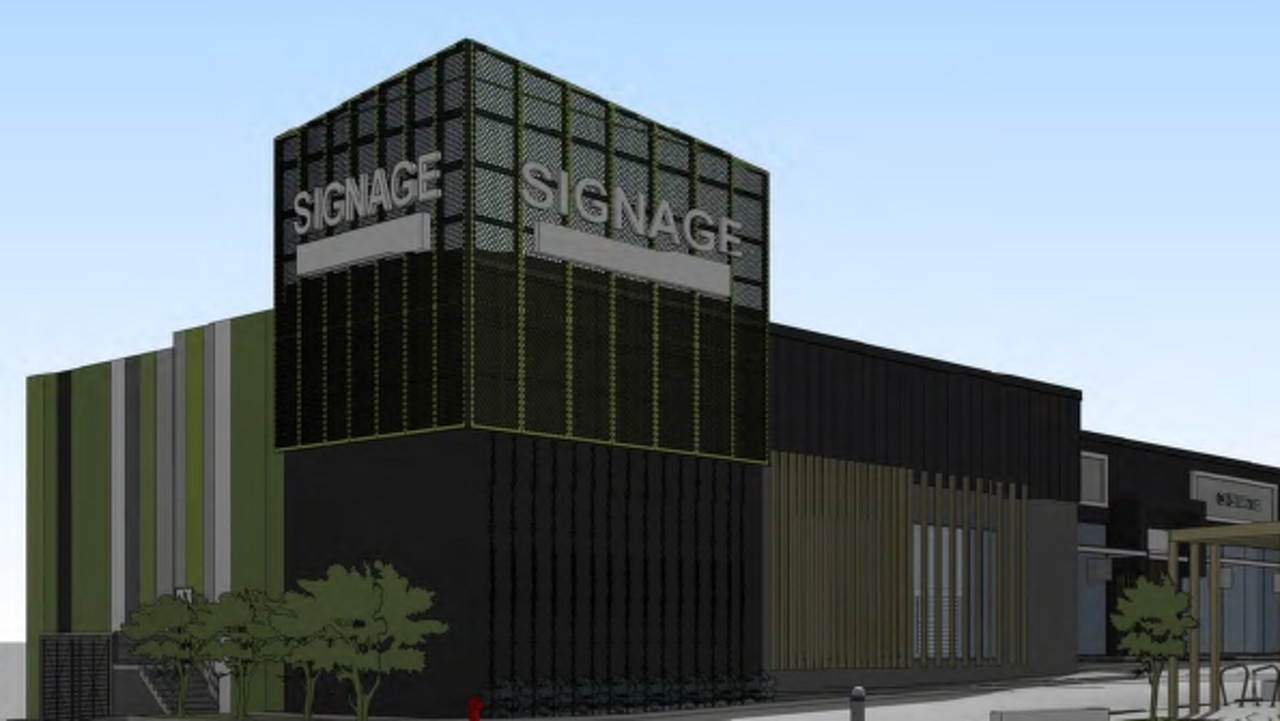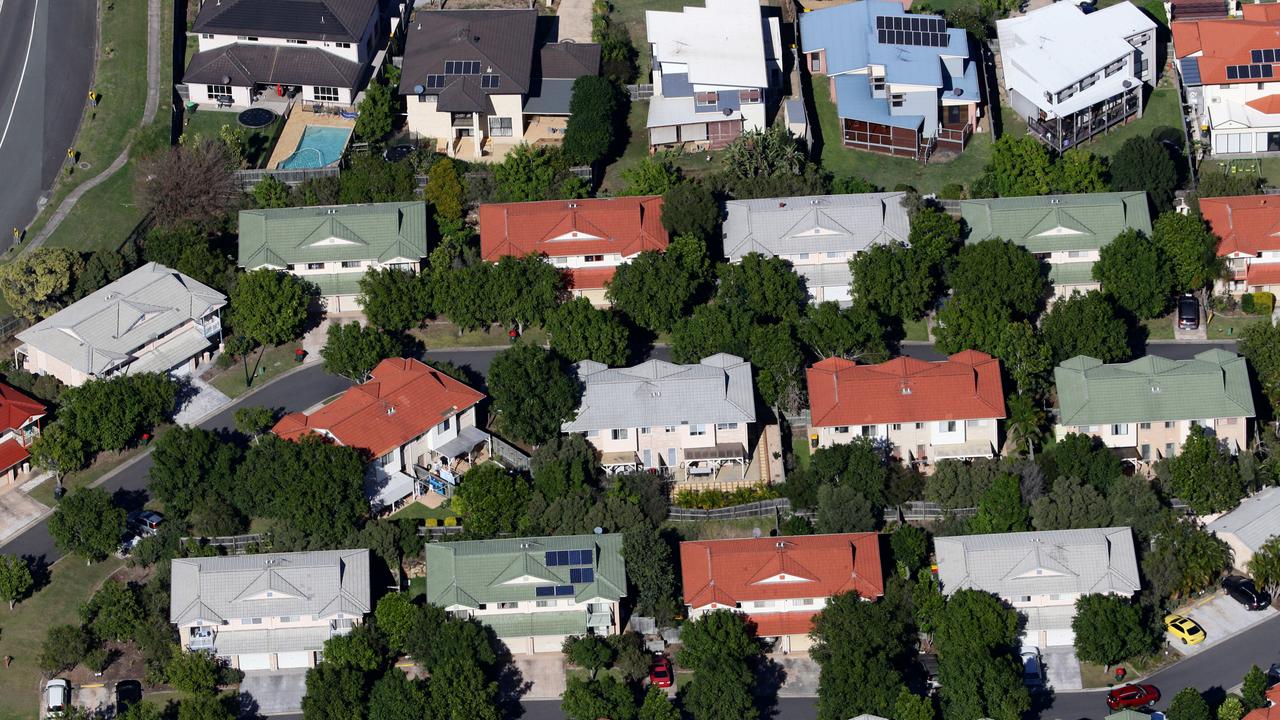What a rate rise means for every Logan suburb | Full list
Experts say even an interest rate rise of just one per cent could push entire suburbs into ‘mortgage stress’. Use our special interactive to find out how increased rates could impact your suburb.

Property
Don't miss out on the headlines from Property. Followed categories will be added to My News.
Homeowners in more than 80 Queensland suburbs, including multiple Logan areas, may struggle to pay their mortgage when official interest rates begin to rise, with many families expected to push their budgets to the limit in the pandemic property boom.
New data shows that even a rate rise of just one per cent could push households in 17 Logan suburbs to the brink of “mortgage stress”.
The worst affected will be Forestdale, where double income households currently needed to spend 32.9 per cent of their wages on mortgage repayments.
Munruben home owners must set aside 25.7 per cent of their household income, followed by Mundoolun (25.2 per cent), Logan Village (24.9 per cent) and Drewvale (24 per cent).
A one per cent rates rise would see repayments in Forestdale surge to 37.4 per cent of income.
More than 28 per cent is considered the benchmark for mortgage stress.
Munruben would climb to 29.2 per cent with a 1 per cent rise in bank rates and Mundoolun would increase to 28.6 per cent.
The official cash rate set by the Reserve Bank of Australia sits at a record low 0.1 per cent, but some banks have already begun lifting their own fixed rates, with pundits tipping an official rate rise may come sooner than expected.
The Australian Prudential Regulation Authority (APRA) has also lifted its minimum interest rate buffer to 3 per cent.
REA Group experts analysed current median property values, average incomes (2018/19, ATO) and current average monthly mortgage repayments with a 2.5 per cent interest rate in each Queensland suburb.
The analysts then applied interest rate hikes of 0.25, 0.5 and 1 per cent, with many of the suburbs facing the biggest financial pile-on located in markets where prices have exploded.
But most Logan suburbs would still be under the 28 per cent “stress’’ threshold if rates rose by 1 per cent.
That was because median house prices are below that in many other parts of southeast Queensland, particularly Brisbane, the Gold Coast and Sunshine Coast.
In Brisbane, double income households in Robertson currently contribute 47.9 per cent of their total income on their mortgage, but that income-to-repayment ratio blows out to 49.4 per cent with a rate hike of 0.25 per cent, 51.4 per cent with an increase of 0.5 per cent and 54.4 per cent with a one per cent rate hike.
That pressure doubles for single income households, with the average individual annual income in Roberston just $48,745, according to ATO figures.
Logan real estate agent, and regional chamber of commerce president, Chyerl Pridham said an increase in interest rates could devastate the region.
“The interest rates are almost always growing. Especially now with Covid,” Ms Pridham said.
“If your loans are not fixed then people are going to get a nasty surprise over the coming years.
“We’re going to see home loan payments almost double.”
Ms Pridham said the housing market will just continue to sky rocket.
“Everything is going up and it’s just going to keep going up. House prices, rentals, and especially interest rates,” she said.
“So to cover those increasing home loan payments, it’s going to trickle down into our rentals and the rental crisis is going to get even worse.
“It’s all a flow on affect and it’s going to be a big lot of hardship for homeowners and renters in Logan.
“For people looking at buying homes my advice would be to try and get a fixed interest rate if you can, because I don’t think that’s going to be a possibility for much longer.”
REA PropTrack economist Paul Ryan agreed with Ms Pridham, saying home loan repayments will increase.
“With strong recent increases in housing prices, and an extended period of exceptionally low borrowing costs, many Australians have taken on bigger mortgages than ever before,”
Mr Ryan said.
“With markets expecting increased interest rates as early as next year, borrowers may find repayments increasing earlier than expected.”
With median house values now $1.23 million, an increase of 18.4 per cent in the 12 months to October, many of those average workers have already been priced out of that local market.




